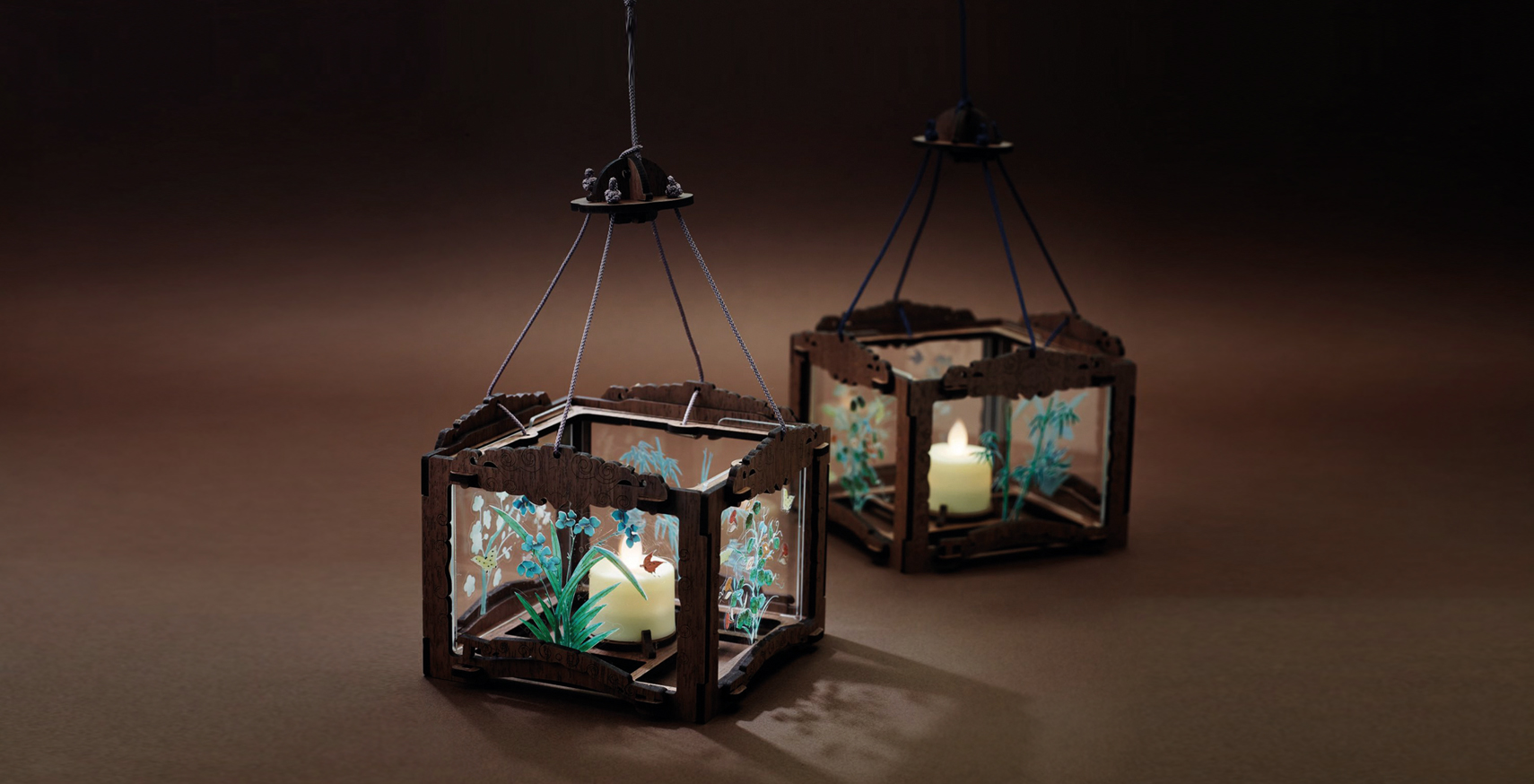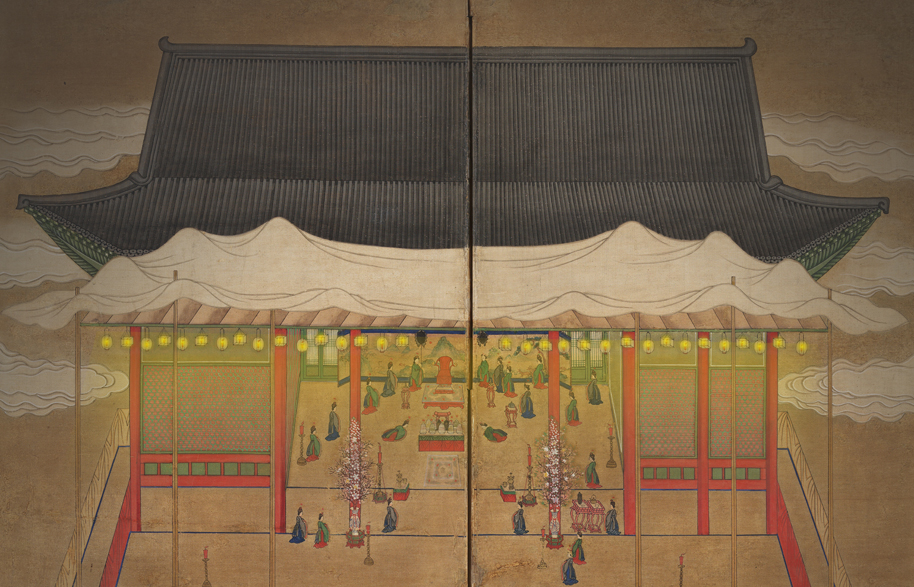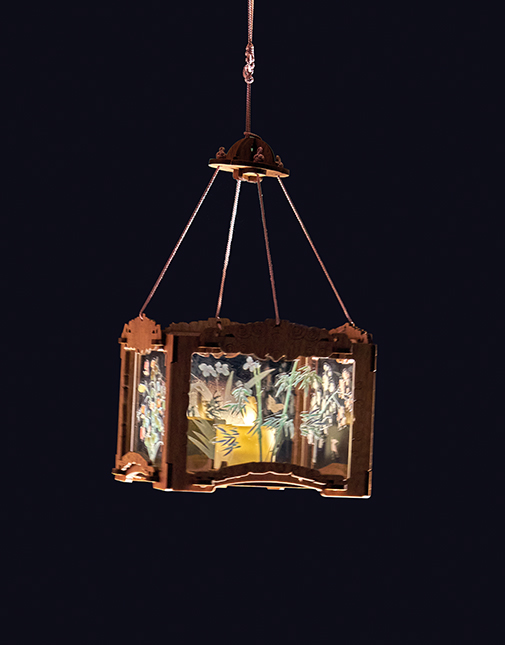January 2021

January 2021
When Crown Prince Hyomyeong hung lanterns to light up a royal banquet to celebrate his mother’s 40th birthday in 1828, little could he have imagined that some 200 years later, the tradition would catch fire on Instagram. However, the National Palace Museum of Korea’s DIY kits for making replicas of 19th century square glass lanterns have taken off, powered by word-of-mouth on social media and positive accounts in the local press.
Written by
Robert J. Koehler
Photo Courtesy of
National Palace Museum of Korea

When the National Palace Museum of Korea and the Korean Cultural Heritage Foundation held its inaugural sale of the KRW 30,000 kits on Nov. 16, they sold out in just two hours. They sold out in just ten minutes in a second round of sales on Nov. 27, while a third round on Dec. 9 crashed the site’s server. “This beautiful lantern makes my quarantine days so much better,” wrote Zay (@zayzid), an Instagram fashionista with a particular interest in traditional Korean arts.
The square glass lanterns of the 19th century Joseon royal court first came to public attention last year, when the National Palace Museum (NPM) selected a lamp in its collection as its curator-recommended royal court artifact for the month of June.
According to the museum, the royal court of Joseon originally held no night banquets, preferring instead to host such festivities in the early morning.
Under Crown Prince Hyomyeong’s leadership, however, the court began hosting night banquets in 1828, illuminated by a variety of lanterns. Glass lanterns first appeared in 1829, though the one in the museum’s possession appears to date from 1848, based on its likeness to lanterns found in archival illustrations of a royal banquet from the time. The lanterns represent the Joseon royal court’s changing banquet traditions in the 19th century.
In October, the Cultural Heritage Foundation began its annual Royal Culture Festival, a celebration of Seoul’s royal palaces and their traditions. In response to the COVID-19 pandemic, this year’s festival included online and offline activities. As part of the virtual festival, the foundation teamed up with NPM to send free DIY glass lantern kits to 1,000 people selected through several rounds of lucky draws.
When no fewer than 10,000 people applied, prospective buyers called on the hosts to sell the kits. Which the hosts did, meeting with an unexpectedly enthusiastic response.
The lanterns tap into young people’s recent enthusiasm for retro items and styles. Instagram expert Marketing Factory (@marketingfactory_) wrote of the kits, “It’s an example of merch marketing that captures the consumer style of young people who think recreations of the past are trendy and fresh.”
 These palace-set programs and tours are thorough reenactments of ancient customs and vista.
These palace-set programs and tours are thorough reenactments of ancient customs and vista.
 If you’d like to purchase a DIY lantern kit, look out for additional rounds of sales at the KCHF’s KHmall (khmall.or.kr).
If you’d like to purchase a DIY lantern kit, look out for additional rounds of sales at the KCHF’s KHmall (khmall.or.kr).
The original lantern in the National Palace Museum collection is a big box measuring 45 cm wide and deep and 37 cm high. The frame is of lacquered wood, while painted flowers adorn the inner sides of the glass panels. As a light source, candles were placed in the middle. In the days of Joseon, these lanterns would have hung from the eaves of palace roofs on special nighttime banquets or events.
The DIY kit lanterns are substantially smaller at 13 cm wide and deep and 11 cm high. The frames are made of handcrafted wood, while acrylic boards adorned with decals replace the painted glass panels. Illumination is provided by an LED candle.
The kits are easy to assemble. With a bit of concentration and patience, anyone can put one together in under an hour. All parts fit together, no glue needed.
What the kit versions lack in size, they compensate for in their faithful reproduction of the original’s sophistica tion and style, an ageless grace that compliments even the trendiest of today’s interiors.
"It’s a cool little item that would look pretty hanging from a window frame, or if you’ve got nowhere to hang it, that you could just put on your table," wrote 29Street, an online lifestyle magazine published by Korean daily, Dong-A Ilbo. “You don’t think it would match your ordinary room? You’d be surprised at how well it blends with a luxurious background; plus, it even blends in with modern items.”
The kits’ faithful reproduction of
the original’s sophistication and style
shows ageless grace complimenting
even modern interiors.
 Floral decor is a timeless design component.
Floral decor is a timeless design component.
Floral decor is a timeless design component.
If you’d like to see square glass lanterns in action, stop by the National Palace Museum in Seoul’s Gwanghwamun Square district in the evening. Ten full-size replicas of the lanterns hang from the entrance, lending the museum a royal ambiance befitting its function.
Korea’s cultural authorities have even bigger ideas for the glass lantern, with plans to develop different illumination devices based on the lamp for Seoul’s palaces, Korea’s royal tombs and nighttime cultural excursions. This would include hand-held glass lamps to occasionally replace the ubiquitous cheongsa chorong, red-and-blue silk lanterns that are practically Korea’s only traditional portable light, for use in moonlight palace tours and other nighttime programs.
Though the KCHF’s online shopping mall may offer next rounds of sales (of the kits for KRW 30,000 excl. shipping), be warned that supplies sell out quickly.